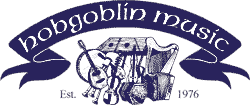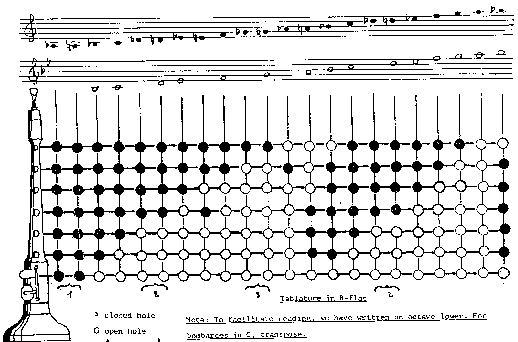
| THE HOBGOBLIN INFO SOURCE | |||
| HOBGOBLIN INDEX PAGE | HOBGOBLIN INFO INDEX |
CATALOGUE & ONLINE SALES | HOBGOBLIN SHOP PAGES | ABOUT HOBGOBLIN |

| THE HOBGOBLIN INFO SOURCE | |||
| HOBGOBLIN INDEX PAGE | HOBGOBLIN INFO INDEX |
CATALOGUE & ONLINE SALES | HOBGOBLIN SHOP PAGES | ABOUT HOBGOBLIN |
ABC of the BombardeHolding the BombardeThe index, middle and ring fingers of the left hand stop the three upper holes; the same fingers on the right hand stop the three lower holes, and the little finger on the left hand manipulates the key (for keyless bombardes, read of course: 'closes the seventh hole'). The left thumb is placed on the instrument directly beneath the left index finger, the right thumb beneath the index and middle fingers of the right hand.The bombarde must be held as closely as possible to the perpendicular in relation to the player. The holes are closed by the undersides of the first joints. Take care to keep the fingers supple, and not to raise them too high, so as to maintain the flexibility necessary for good playing technique. Important advice: Be sure you have correctly placed the reed in the neck of the bombarde. (When playing in a scale in B flat, the two B flats should be perfectly in tune.) There is only one position for the reed that will give you a B flat scale in tune. In this regard, specify Camac reeds from your supplier, since these have been specially made for the bombarde. 
As indicated in the above drawing, your lips (B and B') must not touch the ring at the top of the bombarde, but must pinch the reed where the thread begins. The tip of the tongue "attacks" the note, as if pronnouncing the syllable "te". Tounging may be used to separate the notes, but traditional musicians prefer to use lip pressure. An excellent exercise consists of "drawing out the sounds". Attack the note very softly, pressing hard on the reed with the lips, then increase the intensity, while reducing the lip pressure. Finally, decrease the volume of the sound again. "Drawing out the sounds" permits a correct modulation of the notes. By following these instructions, the timbre of your bombarde should be warm and gentle rather than blaring. Fingering Chart
Note: To facilitate reading we have written an octave lower. For bombardes in C, transpose. 1. The fingerings for A flat and A natural are identical. Varying pressure on the reed enables the production of two different notes. Bombarde ReedsIt is possible to get reeds specifically for the bombarde, although they are hard to come by. However you can instead use a Scottish Chanter reed (not a practice chanter reed), which will also do the job. |